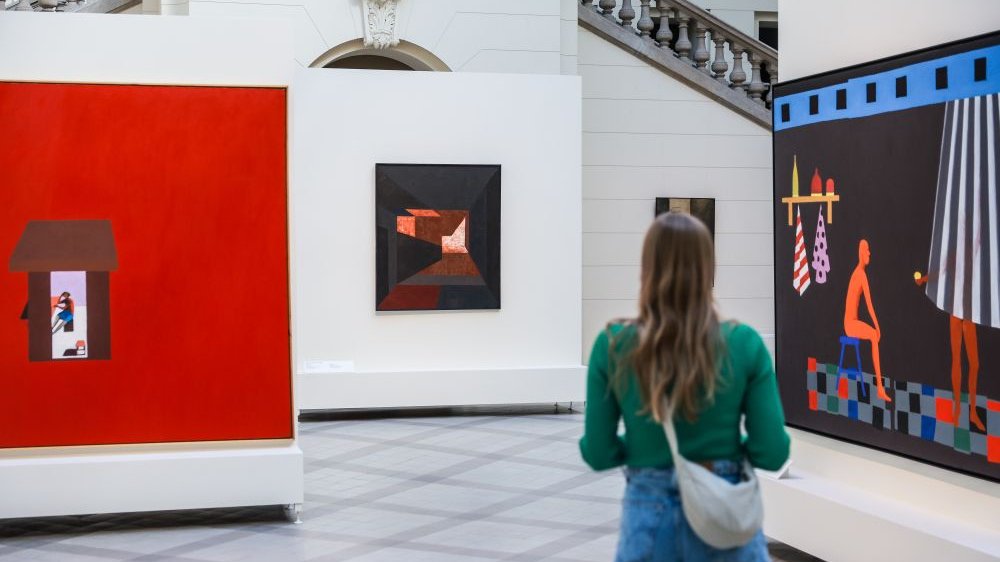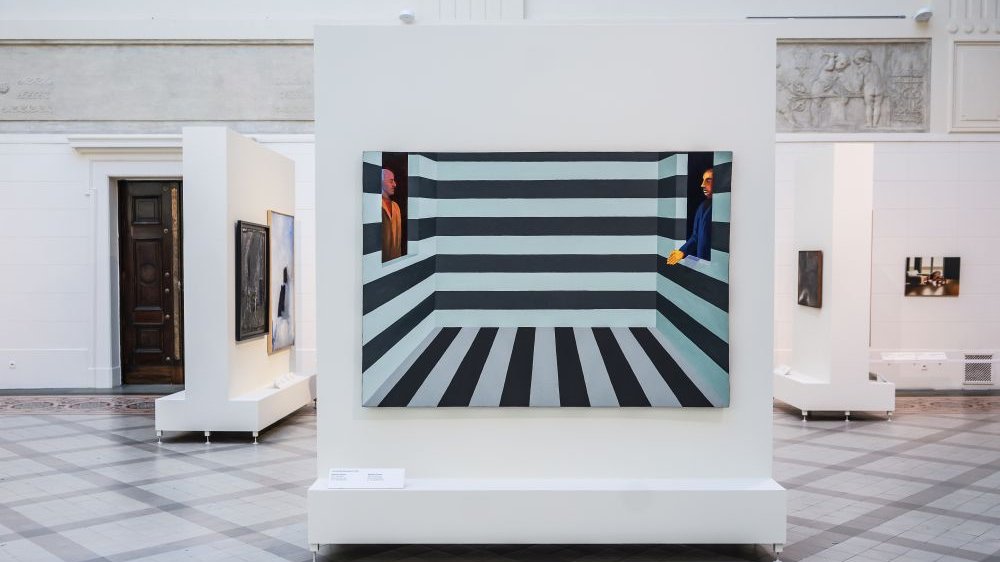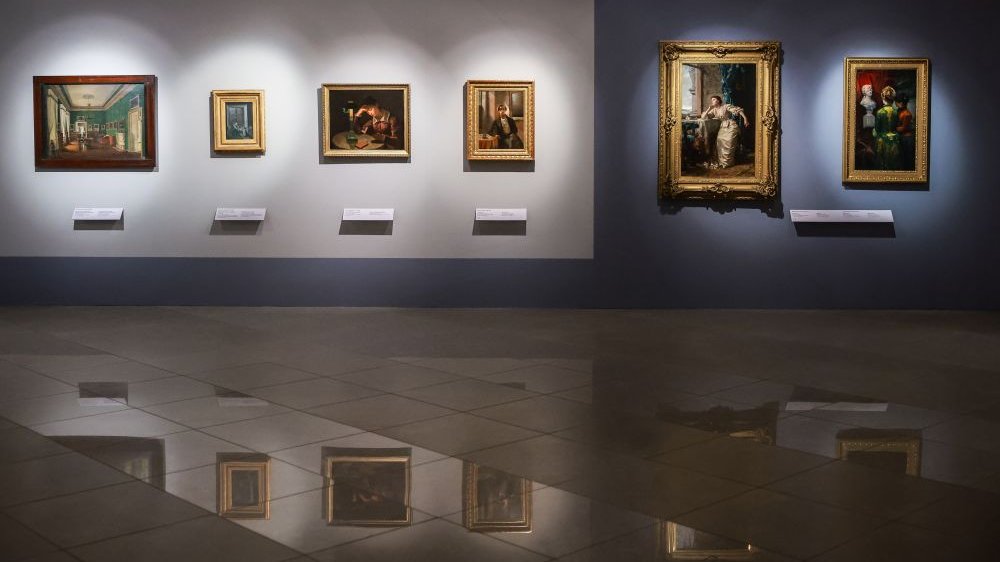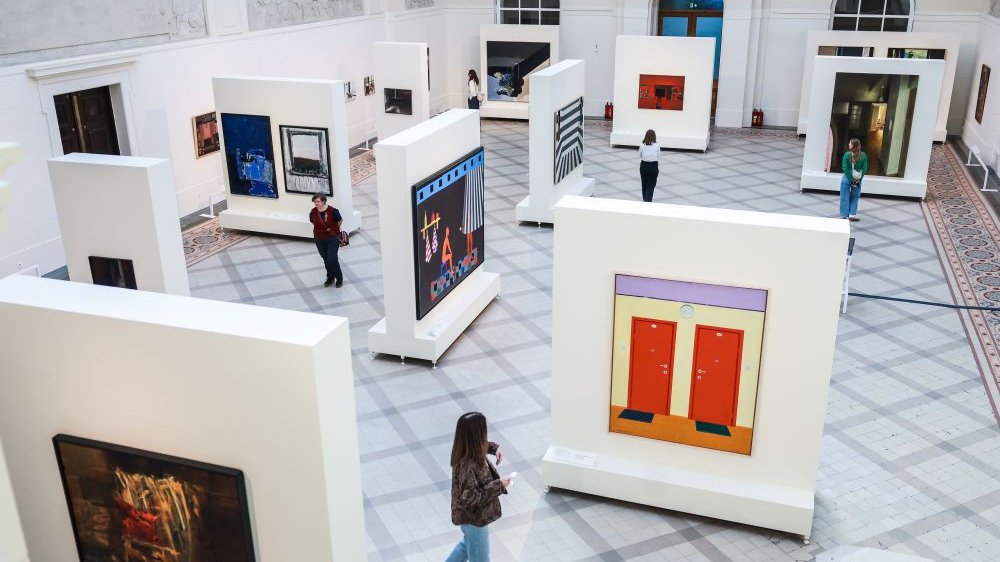What a Theme!

The exhibition's title and subtitle, Hidden Meanings: The Theme of Interiors in Polish Art from the 19th to the 21st Century, immediately set the tone and guide one through the display. Viewing these paintings is a bit like stepping into someone's home. Your eyes naturally wander to their bookshelf and CD collection. You might spot family keepsakes and rows of neatly arranged crystal glasses in a liquor cabinet. That exactly is the experience this exhibition offers, encouraging you to focus on the painting backgrounds and note not just the foreground but also what might at first seem like mere "scenery."
The Young Poland School of Metaphor
As you make your way through the galleries, the word "interior" lingers on your mind, changing the way you look at the art. Thanks to curators Dr. Maria Gołąb and Dr. Agnieszka Skalska, what could easily feel like a dry, textbook-style theme (as in the usual classroom instruction: "Describe the theme of interiors in the poetry of...") actually tells you to view paintings from a fresh perspective.
And there is plenty to take in. The exhibition brings together works by some of Poland's most prominent painters across the centuries, arranged chronologically, all united by the central theme.
The display begins with the Young Poland period, featuring artists such as Wojciech Weiss, Jacek Malczewski, and Olga Boznańska. The interiors they depict are steeped in symbolism and atmosphere. Open windows, as seen in works by Leon Wyczółkowski, Konrad Krzyżanowski, and Weiss, suggest presence; Boznańska's Woman at the Window, emergence from shadows, while Pankiewicz's By the Lamp are imbued with a mysterious, light-fashioned aura.
Bear in mind, though, that the interiors on view are not faithful snapshots of actual life. They reflect the homes of the upper classes, spaces where people used to play pianos, read books, and enjoy their leisure. Walls are adorned with paintings, shelves bow under the weight of books, and tables are set lavishly. There is no hint here of hard work or daily struggle, only a carefully crafted illusion of comfort and refinement.
Biedermeier Realism
By contrast with Young Poland's dreamy, symbolic style, a small room is dedicated to Biedermeier Art, a movement much more grounded in everyday life. Here, we step into the homes of the working classes. Aleksander Kotsis, who himself came from a rural background, portrays the interiors of poor cottages with an almost documentary accuracy. Wacław Koniuszko, meticulously depicts the dimly lit workshops of a cobbler (At the Shoemaker's) and tailor (Tailor at Work). In these works, the interiors are not mere backgrounds. Filled with carefully detailed tools and gleaming leather, the spaces themselves come to life becoming as significant as the people who occupy them.
That same meticulous attention to detail is evident in F. Michalski's In the Kitchen, a portrait of an exhausted mother cradling her child. The cluttered hallway, dishes sitting on a coal stove, laundry hanging on a clothesline, and sparse furnishings all reveal the harshness of rural life. These elements point to the social issues and inequalities experienced by Polish communities in the late 19th century.
From Modernity to the Present
Thanks to the curators' chronological approach, the exhibition also doubles as a crash course of sorts in art history. Moving from the 19th century into the museum's old wing, visitors enter the 20th century and the modern period. This era does away with traditional composition. Backgrounds are no longer mere scenery, while strict references to reality are fully discarded. The realist Biedermeier spaces disappear, replaced by bold bursts of colour and form. Tymon Niesiołowski's interiors explode with colour, providing vibrant counterpoints to the women he portrays. The carefully curated detail of earlier periods gives way to bold expression and playful geometry. Even Józef Czapski's grotesque Self-Portrait with A Light Bulb treats the bulb, the literal source of light, as just as significant as the painter himself.
The final room, and the closing chapter in this history of Polish painting, is devoted to contemporary art. Here, finding a single unifying thread beyond "the interior" can be tricky, but that is precisely the point. A show tracing this theme through history must reflect the diversity of trends that coexist in today's art. So, alongside the photorealism of Łukasz Korolkiewicz and Jakub Adamek, visitors run into Jacek Sienicki's abstract Blue Interior. Władysław Jackiewicz's Interior V explores the geometric perspective, which is deliberately abandoned by Jarosław Modzelewski.
Hidden Meanings also conceal a few notable surprises of their own. In the contemporary art room, several small format works by Wilhelm Sasnal hang quietly. Modest in scale and subtle compared with other brighter canvases, they are easy to overlook. Yet Sasnal, whose work is held by the Tate Modern, MoMA, and Centre Pompidou, transforms that restraint into power. His grey-and-black paintings act as the show's anti-interiors, stripped-down, almost to the point of becoming non-spaces. With his signature minimalism, he leaves room for viewers to project their own emotions. You can follow his stark imagery and confront your own shadows and fears, or, alternatively, imagine colour back into them.
Beyond What Your Smartphone Can Handle
The curators of the National Museum's exhibition invite visitors to take a broader, more attentive view, one that is increasingly rare in the age of social media. Scrolling through an endless succession of images on tiny smartphone screens, we often miss the details that lurk in the background, loom in shadows, and don't immediately claim the spotlight. After all, artists construct their works with meticulous care, in which every detail matters and every element contributes to the greater whole. Hidden Meanings: The Theme of Interiors in Polish Art from the 19th to the 21st Century demonstrates that the most fascinating aspects of art do not always appear in plain view. At times, it pays to do the unusual, take your time and notice the things that easily get overlooked. The interiors depicted by these artists, whether in the background or front and centre, are a visual feast. Because, in the end... it is what is within that really counts.
Adam Jastrzębowski
translation: Krzysztof Kotkowski
Exhibition: Hidden Meanings: The Theme of Interiors in Polish Art from the 19th to the 21st Century
National Museum of Poznań
Open until 18 January
© Wydawnictwo Miejskie Posnania 2025
See more

Christmas Markets and Fairs with Attractions

Truly Festive Vibes

From Musza Góra to Freedom. The Story of a City Square




